![]()
![]()
![]()
Use LEFT and RIGHT arrow keys to navigate between flashcards;
Use UP and DOWN arrow keys to flip the card;
H to show hint;
A reads text to speech;
29 Cards in this Set
- Front
- Back

|
TAE KWON DODO!!!!!!!
|
|
|
Physiologic apoptosis
|
cell death is required for normal development and homeostasis
embryogenesis immune tolerance (if you are but a mere mortal who is too weak to handle autoreactive lymphocytes) regression of temporary tissues (uterine involution) tissue homeostasis |
|
|
pathologic apoptosis
|
excessive or deficient apoptosis results in dz
virus indeuced (CD4+ lymphocyte depletion by immunodeficiency viruses) viral inhibition of apoptosis (poxviruses and epstein-barr virus) autoimmunity (if you're cool like that) neoplasia |
|
|
what is apoptosis
|
what happens when you push the red button
programmed cell death |
|
|
____ is the mediator of apoptosis in the face of irreparable DNA damage
|
p53
|
|
|
what cytokine can stimulate apoptosis
|
TNF
|
|
|
what is p53
|
the mediator of apoopytosis in the face of irreparable DNA damage (such as what you see with UV radiation, toxins, and free radicals)
|
|
|
____ is impt in signaling apoptosis in the face of irreparable DNA damage caused by free radicals
|
p53
|
|
|
decreased apoptosis results in
a. Neoplasia b. Autoimmunity c. Immunodeficiency d. A & B e. A & C |
d. A & B
|
|
|
_____ is involved in apoptosis signaling by death receptor binding
|
TNF and Fas-Fas binding
|
|
|
Fas-Fas binding is used by
|
cytotoxic lymphocytes
|
|
|
apoptosis signaling
|
irreparable DNA damage
- mediated by p53 death receptor binding - by TNF - by Fas-Fas binding (cytotoxic lymphocytes) perforin granzyme pathway - used by cytotoxic lymphocytes - perforin creates pore => granzymes inserted into cell where they activate capases lack of necessary factors - growth factors - hormones (withdraway induces apoptosis leading to organ atrophy) |
|
|
what are the steps in apoptosis
|
signaling
- irreparable DNA damage - death receptor binding - perforin granzyme pathway - lack of necessary factors control - Bcl-2 - p53 execution - mediated by capases removal |
|
|
apoptotic control
|
determins whether cell will commit to or abort apoptotic pathway
Bcl-2 - an anti-apoptotic molecule binds p53 - a pro-apoptotic molecule in response to DNA damage - mutated in many types of cancer |
|
|
apoptotic execution
|
mediated by caspases
activation of endonucleases - cleave DNA into multiples of 180-200 bp protein cross linking - cell shrinkage activation of proteases - cleave nuclear scaffold and cytoskeleton - karyorrhexis and cytoplasmic budding |
|
|
apoptotic removal
|
by phagocytosis
surface membrane phospholipid is flipped to be exposed on surface phagocytes recognize this signal and engulf apoptotic bodies |
|
|
cytotoxic lymphocytes use what for apoptotic signaling
|
perforin granzyme pathway
perforin creates pore granzymes inserted where they activate capases |
|
|
during execution of apoptosis, activation of _____ leads to karyorrhexis & cytoplasmic budding
|
proteases
|
|
|
during execution of apoptosis, activation of _____ leads to cleavage of DNA into multiples of 180-200 bp
|
endonucleases
|
|
|
_____ is mutated in many types of cancer
|
p53
|
|
|
morphology of apoptosis
|
cell shrinkage
- smaller more dense cell chromatin condensation - clumps of chromatin along nuclear membrane apoptotic bodies - formed by cytopolasmic blebs (may contain pieces of nucleus) phagocytosis - occurs quickly - tingible body macrophages |
|
|
apoptosis vs necrosis
|

|
|
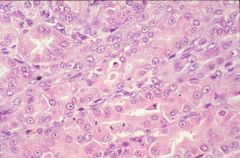
|
apoptosis
|
|
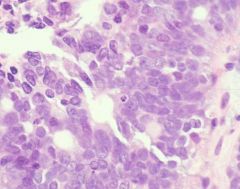
|
apoptosis
cell shrinkage |
|
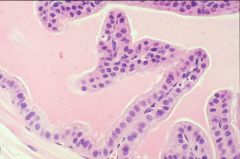
|
cell shrinkage
|
|
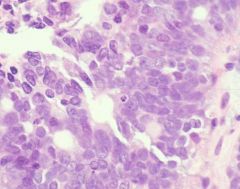
|
cell shrinkage
chromatin condensation |
|
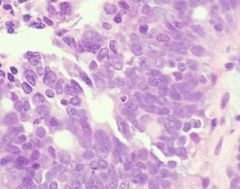
|
cell shrinkage
chromatin condensation |
|

|
cell shrinkage
|
|
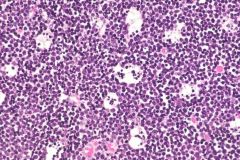
|
phagocytosis
|

